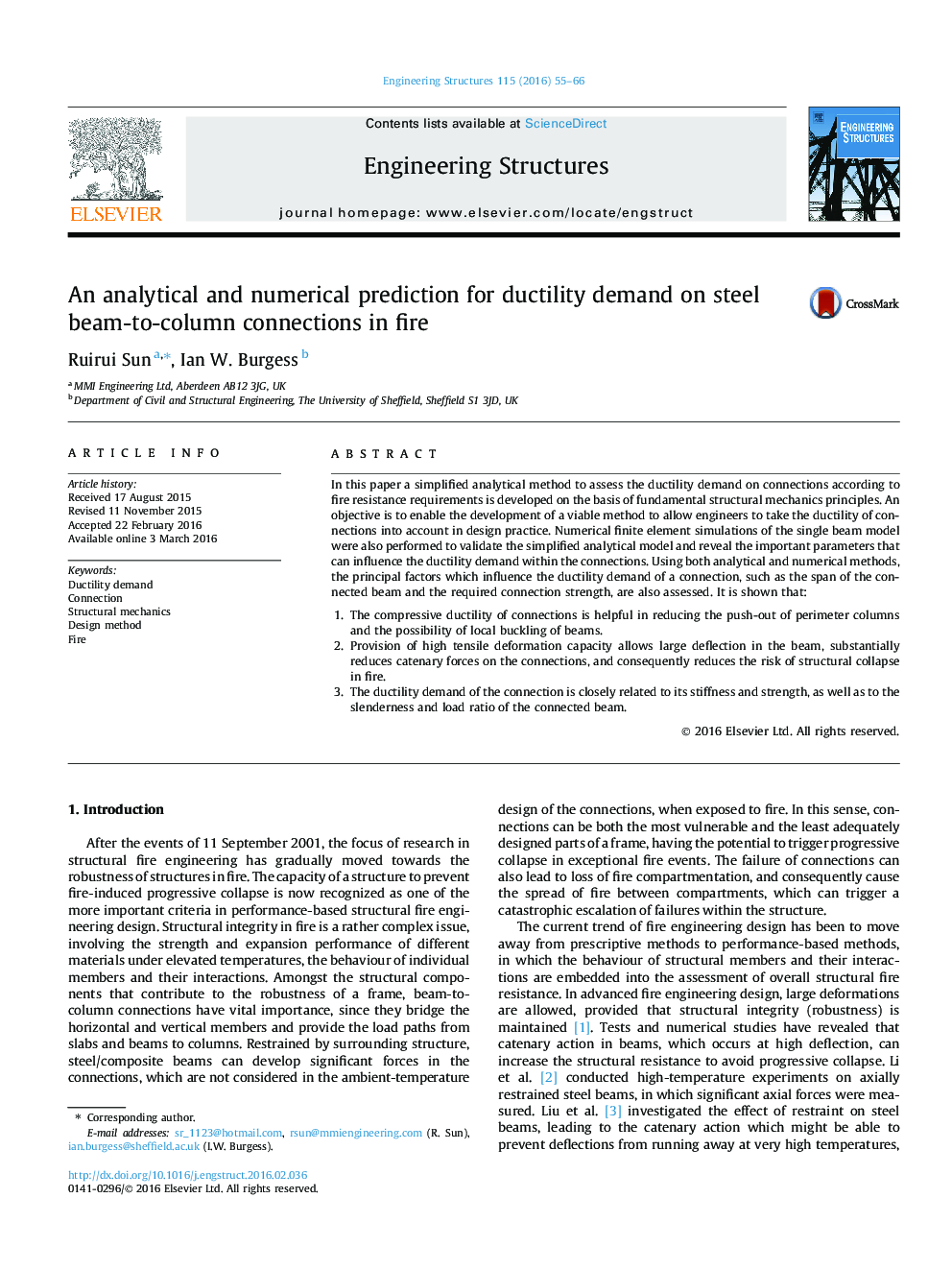| Article ID | Journal | Published Year | Pages | File Type |
|---|---|---|---|---|
| 265774 | Engineering Structures | 2016 | 12 Pages |
In this paper a simplified analytical method to assess the ductility demand on connections according to fire resistance requirements is developed on the basis of fundamental structural mechanics principles. An objective is to enable the development of a viable method to allow engineers to take the ductility of connections into account in design practice. Numerical finite element simulations of the single beam model were also performed to validate the simplified analytical model and reveal the important parameters that can influence the ductility demand within the connections. Using both analytical and numerical methods, the principal factors which influence the ductility demand of a connection, such as the span of the connected beam and the required connection strength, are also assessed. It is shown that:1.The compressive ductility of connections is helpful in reducing the push-out of perimeter columns and the possibility of local buckling of beams.2.Provision of high tensile deformation capacity allows large deflection in the beam, substantially reduces catenary forces on the connections, and consequently reduces the risk of structural collapse in fire.3.The ductility demand of the connection is closely related to its stiffness and strength, as well as to the slenderness and load ratio of the connected beam.
